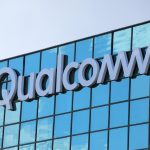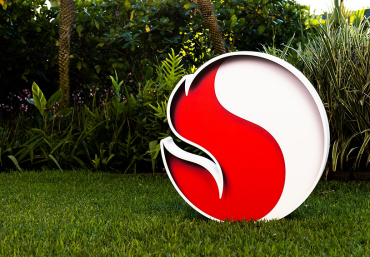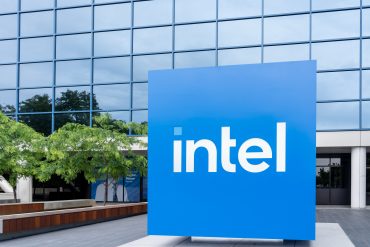
- Quantum & Chips
D‑Wave Quantum Revenue Soars Despite IBM Competition
6 minute read

Quantum computing startup’s hardware sales drive record revenue while tech giants advance competing technologies
Key Takeaways
- D-Wave revenue surges 509% in Q1 to $15 million as the company shifts from service rentals to direct quantum computer sales, though it maintains operating losses of $71 million annually.
- Stock volatility intensifies with 28% decline from recent peak of $19.76, despite 46% year-to-date gains, as insider selling and competitive pressures weigh on investor sentiment.
- IBM and Google pose scaling threats with gate-based quantum computing advances, as IBM targets fault-tolerant systems by 2029 that could outpace D-Wave’s annealing technology approach.
Introduction
D-Wave Quantum Computing faces a defining moment as its stock experiences dramatic swings amid intensifying competition from tech giants. The quantum computing pioneer has delivered explosive revenue growth of over 500% in the first quarter, yet shares have tumbled 28% from recent highs as investors weigh the company’s commercial quantum annealing technology against IBM and Google’s advancing gate-based systems.
The company’s transition from a service rental model to direct hardware sales marks a strategic pivot that generated record quarterly revenue of $15 million. However, mounting competitive pressures and ongoing profitability challenges have created significant uncertainty about D-Wave’s ability to maintain its market position in the rapidly evolving quantum computing sector.
Key Developments
D-Wave’s first quarter performance showcased the company’s operational transformation, with revenue jumping from previous levels driven by direct sales of annealing-based quantum computers. The company launched its sixth-generation Advantage2 quantum processor, featuring over 4,400 qubits with enhanced connectivity and reduced noise levels.
Recent insider selling activities have triggered investor concerns, contributing to a 3% stock decline following these transactions. The stock has experienced consecutive daily declines over three trading sessions, with prices falling from $14.06 to $14.02 in the latest session alone.
Volume surged by 24 million shares to reach 63 million shares worth approximately $878 million, indicating heightened trading activity as prices declined. This pattern of rising volume on falling prices typically signals increased selling pressure and potential risk for investors.
Market Impact
D-Wave’s stock exhibits extreme volatility with daily average movements of 6.18%, reflecting the speculative nature of quantum computing investments. The shares currently trade near support levels at $13.15, down significantly from the 52-week high of $19.76.
Pre-market trading on June 23 saw a sharp 9.51% decline, demonstrating how quickly sentiment shifts in the quantum computing sector. The company’s market capitalization stands at approximately $5.24 billion, though this valuation faces pressure from competitive dynamics and profitability concerns.
The broader quantum technology market provides context for D-Wave’s position, with projections showing growth to $1.88 billion in 2025 and potentially $4.89 billion by 2029. Quantum computing accounts for roughly 62% of this market, creating substantial opportunities alongside intensified competition.
Strategic Insights
D-Wave’s annealing technology approach focuses on solving current optimization and artificial intelligence problems, differentiating it from competitors pursuing universal quantum computing solutions. This strategy enables immediate practical applications for enterprise customers across 42 countries, with sub-second response times for specific problem types.
The competitive landscape presents significant challenges as IBM advances toward fault-tolerant quantum systems by 2029, potentially offering superior scaling capabilities. Google’s parallel developments in gate-based quantum computing could similarly overshadow D-Wave’s specialized annealing approach if these technologies achieve higher qubit counts and lower error rates.
Enterprise adoption shows promising signs with multiple six- and seven-figure deals, including a $5 million multi-year subscription from a major financial services firm. Notable customers include Lockheed Martin, Volkswagen, Mastercard, and Siemens Healthineers, demonstrating real-world application potential across diverse industries.
Expert Opinions and Data
D-Wave Vice President of Quantum Technology Evangelism Murray Thom emphasizes the company’s current market relevance, citing rapid response capabilities that meet immediate customer demands. CEO Alan Baratz highlights growing interest from international supercomputing centers seeking to own quantum systems rather than rent services.
MIT research affiliate Elif Kiesow discusses the significance of IBM’s fault-tolerant quantum computing timeline, representing a crucial evolution in quantum technology development. Forbes analysis suggests that IBM and Google’s technologies may scale faster than D-Wave’s offerings, potentially limiting the company’s market position.
SeekingAlpha analysts note D-Wave’s dependence on equity sales for liquidity given ongoing operating losses and limited market adoption. They warn that larger competitors’ platform scaling could relegate D-Wave to boutique status for specialized optimization tools, subject to significant technological and competitive risks.
Conclusion
D-Wave Quantum Computing stands at a critical juncture where explosive revenue growth conflicts with mounting competitive pressures and profitability challenges. The company’s annealing technology provides immediate practical value for enterprise optimization problems, yet faces potential obsolescence from IBM and Google’s advancing gate-based systems.
Strong customer momentum and a robust cash position of $304.3 million provide operational stability, while the shift to direct hardware sales demonstrates strategic adaptability. However, technical indicators currently show sell signals from both short and long-term moving averages, suggesting continued near-term pressure on the stock price as investors evaluate D-Wave’s long-term competitive viability in the quantum computing race.








